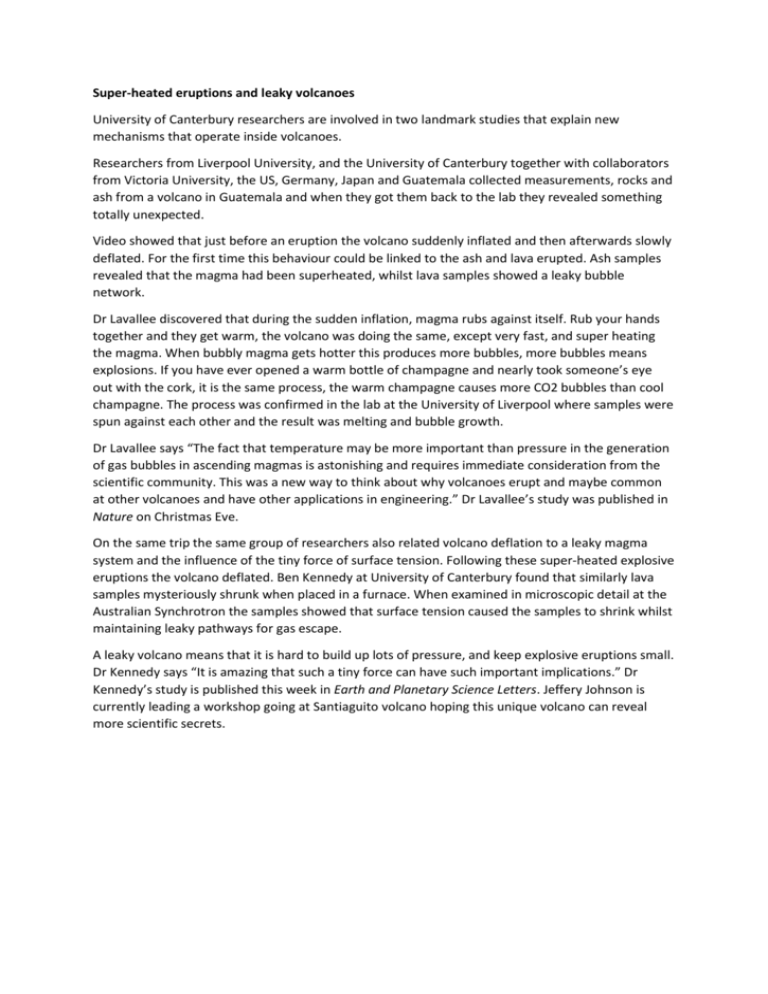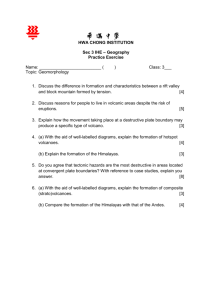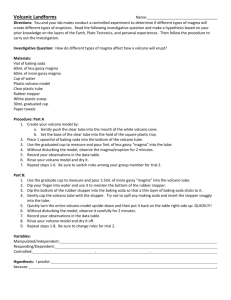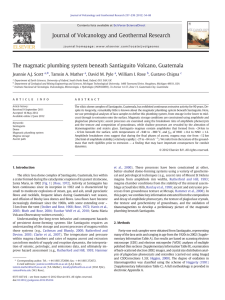Media Release
advertisement

Super-heated eruptions and leaky volcanoes University of Canterbury researchers are involved in two landmark studies that explain new mechanisms that operate inside volcanoes. Researchers from Liverpool University, and the University of Canterbury together with collaborators from Victoria University, the US, Germany, Japan and Guatemala collected measurements, rocks and ash from a volcano in Guatemala and when they got them back to the lab they revealed something totally unexpected. Video showed that just before an eruption the volcano suddenly inflated and then afterwards slowly deflated. For the first time this behaviour could be linked to the ash and lava erupted. Ash samples revealed that the magma had been superheated, whilst lava samples showed a leaky bubble network. Dr Lavallee discovered that during the sudden inflation, magma rubs against itself. Rub your hands together and they get warm, the volcano was doing the same, except very fast, and super heating the magma. When bubbly magma gets hotter this produces more bubbles, more bubbles means explosions. If you have ever opened a warm bottle of champagne and nearly took someone’s eye out with the cork, it is the same process, the warm champagne causes more CO2 bubbles than cool champagne. The process was confirmed in the lab at the University of Liverpool where samples were spun against each other and the result was melting and bubble growth. Dr Lavallee says “The fact that temperature may be more important than pressure in the generation of gas bubbles in ascending magmas is astonishing and requires immediate consideration from the scientific community. This was a new way to think about why volcanoes erupt and maybe common at other volcanoes and have other applications in engineering.” Dr Lavallee’s study was published in Nature on Christmas Eve. On the same trip the same group of researchers also related volcano deflation to a leaky magma system and the influence of the tiny force of surface tension. Following these super-heated explosive eruptions the volcano deflated. Ben Kennedy at University of Canterbury found that similarly lava samples mysteriously shrunk when placed in a furnace. When examined in microscopic detail at the Australian Synchrotron the samples showed that surface tension caused the samples to shrink whilst maintaining leaky pathways for gas escape. A leaky volcano means that it is hard to build up lots of pressure, and keep explosive eruptions small. Dr Kennedy says “It is amazing that such a tiny force can have such important implications.” Dr Kennedy’s study is published this week in Earth and Planetary Science Letters. Jeffery Johnson is currently leading a workshop going at Santiaguito volcano hoping this unique volcano can reveal more scientific secrets. Photo of campsite at Santiaguito volcano, Guatemala, whilst erupting super-heated magma, photo credit Ben Phillips









